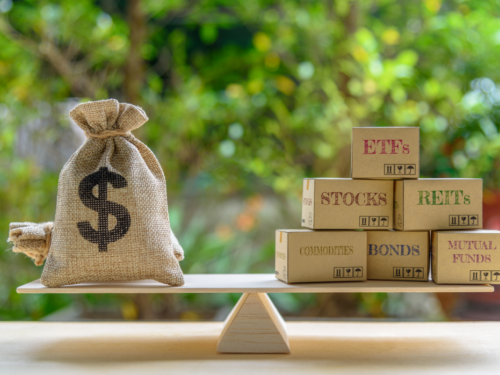
Summary:
* S&P 500 Index posted its third consecutive month of gains
* Financial market history books might offer lessons
* Understanding human behavior may be the most important requirement right now
- Commentary:
-
April featured a macro environment that tilted positive. The market reacted favorably to i) the Federal Reserve continuing to increase its balance sheet (greater than $1.2t over the last year), ii) a rebound in U.S. durable-goods orders, and iii) a record 21.1% increase in U.S. household income in March[i].
We noted that the service PMI index of prices increased to 61% in April (manufacturing PMI also continues to suggest a greater inflation risk) and the COVID resurgence pushed the Eurozone into a double-dip recession[ii]. These potential risks seemed far from investor’s minds.
Accordingly, the S&P 500 Index[iii] posted its third consecutive month of gains, up 5.3% in April. International markets did quite well with the MSCI EAFE net up 2.7% and the MSCI Emerging Markets gaining 2.4% given U.S. dollar weakness[iv]. U.S. Treasury Bonds had a good month after a significant selloff in March while the Bloomberg Barclays High Yield Bond index[v] returned 1.1%. Higher inflation expectations were supported by an 8.3% increase in the Bloomberg Commodity Index[vi] and a 7.4% increase in crude oil[vii] during the month.
Recently, we have been reflecting on what the end game for financial markets might look like after reading noted economist Mohamed El-Erian’s May 3rd opinion piece in the Financial Times entitled “Fed framework holds central bank hostage[viii].” We have been digging out our financial market history books to examine previous bubbles and manias and inflationary episodes to see what lessons they might offer for our immediate future and beyond. Of course, we cannot divine the timing of any eventual market shift. We recall Sir Isaac Newton’s famous quote in 1720 after initially making money in the South Sea Bubble, re-entering the scam, and then losing multiples more of his profit: “I can calculate the motions of the heavenly bodies, but not the madness of people[ix].”
We have often mentioned in these updates how today reminds us of the Internet Bubble of 2000 and what we read from past bubbles echoes our experience then and what we are seeing today. What is a bubble? Nobel Laureate Franco Modigliani offered an insightful definition: “The expectation of growth produces growth, which confirms the expectation; people will buy it because it went up. But once you are convinced that it is not growing anymore, nobody wants to hold a stock because it is overvalued. Everybody wants to get out and it collapses, beyond the fundamentals[x].”
Last year’s unprecedented market recovery which we talked about in the March Blog, this year’s GameStop democratization of the markets and cryptocurrencies’ ascendence, all seem familiar. In Charles Mackay’s “Extraordinary Popular Delusions and the Madness of Crowds”, first published in 1841, he recounts, “Many individuals suddenly became rich. A golden bait hung temptingly out before the people, and, one after the other, they rushed to the tulip marts, like flies around a honey-pot. Everyone imagined that the passion for tulips would last forever, and that the wealthy from every part of the world would send to Holland, and pay whatever prices were asked for them. The riches of Europe would be concentrated on the shores of the Zuyder Zee, and poverty banished from the favoured clime of Holland. Nobles, citizens, farmers, mechanics, seamen, footmen, maidservants, even chimney sweeps and old clotheswomen, dabbled in tulips. People of all grades converted their property into cash and invested it in flowers.[xi]”
Like the recently announced second NBA-star-sponsored Shaq SPAC[xii], the 1920s stock market attracted the celebrities and “social media influencers” of that age including Groucho Marx, who borrowed over a quarter of a million dollars to play the stock market. He wrote in his memoirs, during that bull market there was no need to employ a financial advisor, “You could close your eyes, stick your finger any place on the big board and the stock you bought would start rising[xiii].” Marx along with Irving Berlin and Eddie Cantor of Ziegfield Follies fame speculated heavily and eventually lost fortunes[xiv]. (We will see how Elon Musk does with his cryptocurrency holdings.)
Understanding human behavior may be the most important requirement right now and we have also looked to classic literature to understand the narratives that we tell ourselves at this point in the market cycle. It is easy to take these narratives and what you are being told by CNBC into your heart and act against your best interest. We reflect on the narrative, known as Nihonjinron, that the Japanese told themselves during their bubble of the 1980s – that Japan is unique and better[xv]. But such hubris is often a precursor to bubbles.
Shakespeare’s observation about fortune seems truer that “she is turning and inconstant . . . the poet makes a most excellent description of it.[xvi] Exceptionalism is usually fleeting. To that end, we offer Rudyard Kipling’s poem, “The Gods of the Copybook Headings[xvii]” written post the 1918 pandemic and just prior to the 1920s bubble discussing the constancy of the human condition. The last two stanzas are chilling in reflecting on today’s market. We continue to pursue a risk balanced approach to the market – not fight the Federal Reserve or run for the hills; be in the game – it could last a long time; and maintain the appropriate emotional distance. We endeavor to not be the “bandaged finger [that] goes wabbling back to the Fire.”
This report was prepared by CIG Asset Management and reflects the current opinion of the authors. It is based upon sources and data believed to be accurate and reliable. Opinions and forward-looking statements expressed are subject to change without notice. This information does not constitute a solicitation or an offer to buy or sell any security.
[i] Macro data is from Evercore ISI’s Weekly Economic Summary 5/2/21.
[ii] Macro data is from Evercore ISI’s Weekly Economic Summary 5/2/21.
[iii] Morningstar: S&P 500 TR USD
[iv] https://www.msci.com/end-of-day-data-search
[v] Morningstar: BBgBarc High Yield Corporate TR USD
[vi] www.Bloomberg.com
[vii] www.finance.yahoo.com
[viii] https://www.ft.com/content/d4b53d27-59b8-4b16-b59b-ef2fe4c0289e
[ix] Kindleberger, Charles P., Manias, Panics, and Crashes – A History of
Financial Crises. Revised ed., Basic Books, 1989, page 38. An excellent
textbook which is required reading at most business schools.
[xi] Mackay, Charles, Extraordinary Popular Delusions and the Madness of Crowds.
Harriman Definitive ed., Harriman House LTD, 2018, page 79.
[xii] https://finance.yahoo.com/news/shaq-spac-2-0-coming-133637566.html
[xiii] Chandler, Edward. Devil Take the Hindmost – A History of Financial Speculation.
Plume Books, 2000, page 207. A more narrative focused account of speculation
from Rome to the Japanese bubble economy.
[xiv] Ibid. p. 203.
[xv] Ibid. p. 283.
[xvi] Shakespeare, William. Henry V. Library of Alexander, 1956, Act III, Sc. 6.
[xvii] First published in the Sunday Pictorial (London) October 26, 1919, and – as “The
Gods of the Copybook Margins” – in Harper’s Magazine in January 1920. It
has also been called “Maxims of the Market Place”. ‘Copybook
headings’ were proverbs or maxims printed at the top of 19th century British
schoolboys’ copybook pages. http://www.kiplingsociety.co.uk/poems_copybook.htm


